Cleopatra by King and County
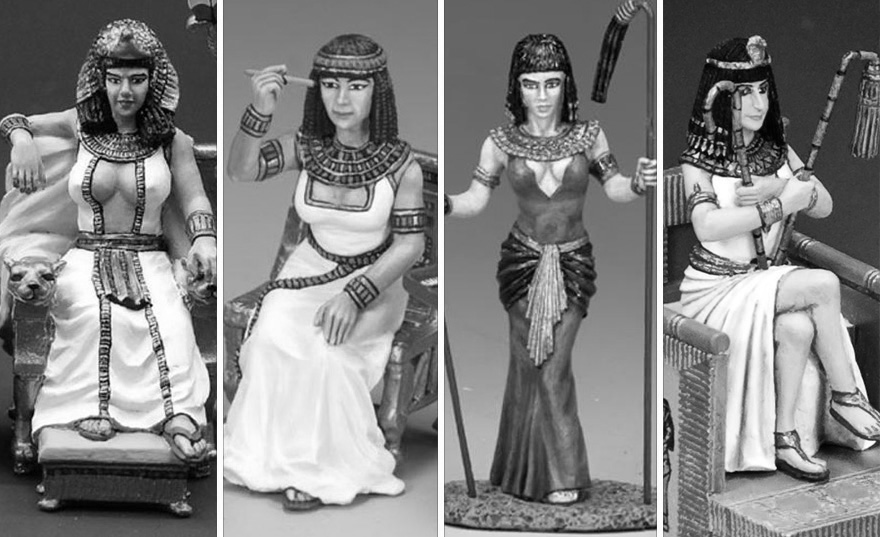
Amongst the new releases for April, King and Country announced a new rendition of Cleopatra, this time in a carrying chair. This is the fourth version of this great Egyptian queen being produced by Andy Neilson and his team. So, for this new blog, we will have a look at the three previous editions of this iconic Ptolemaic ruler as at the brand new AE101 - Queen Cleopatra’s Sedan Chair Set.
The first Cleopatra produced by King and Country was the AE020 - The Cleopatra Set. This version, released during the mid 2000’s, came with a Court Chamberlain and a table covered with delicious looking goods. It is possible to see some similarities in this first rendition of this great Egyptian Queen with the version portrayed by Claudette Colbert in the 1934 movie Cleopatra by Cecil B. DeMille. The throne is decorated with two feline shaped armrests like those from the sedan chair seen in the movie. The pose of Cleopatra is also similar to one famous promotional photoshoot. In addition, she is wearing a dress with a generous boob window. This feature is actually most useful as it’s reminiscent of the final scene from that movie where a snake bite is involved…
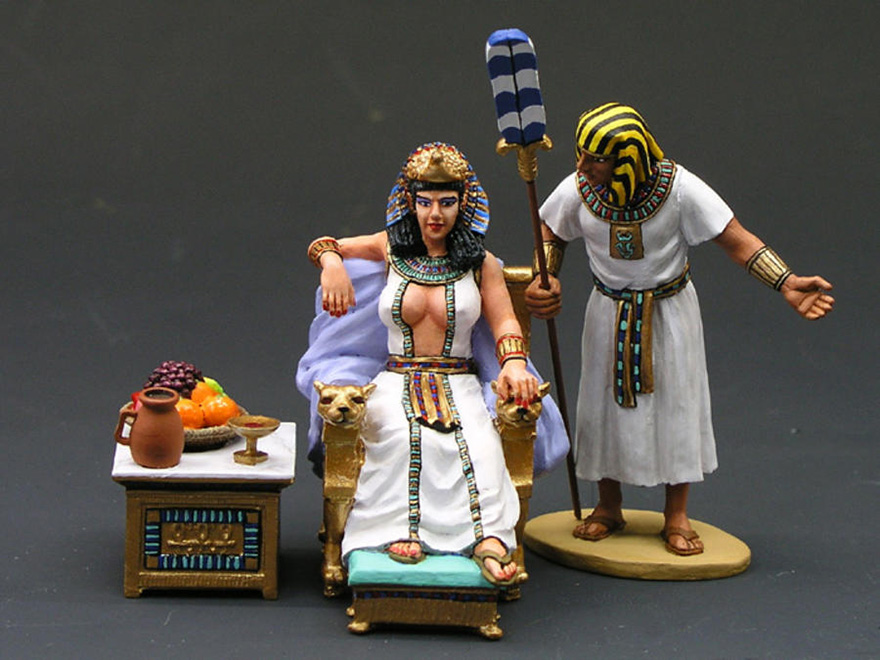
The AE020 - The Cleopatra Set that started a tradition.
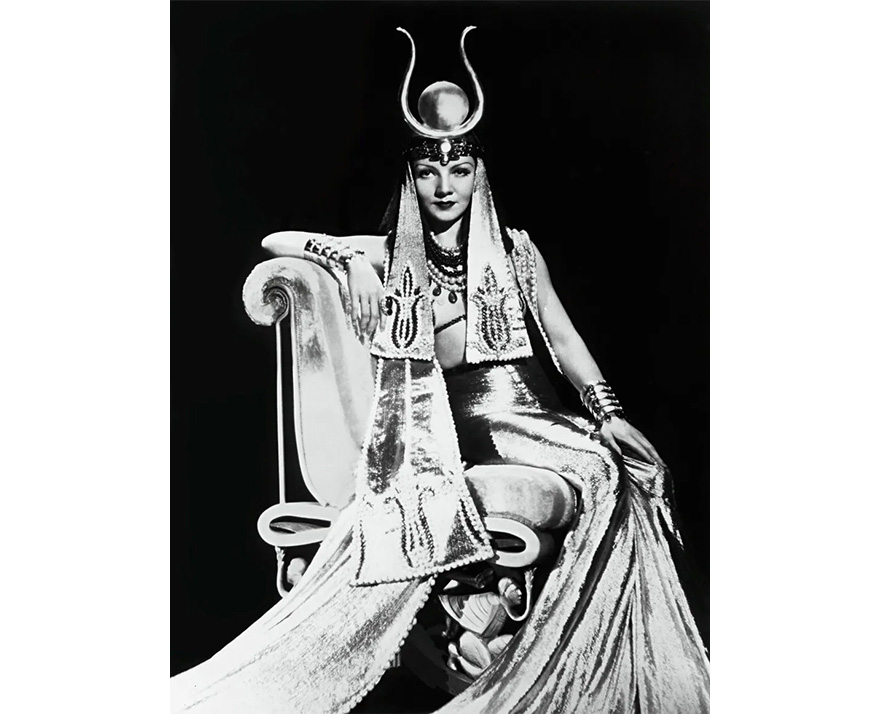
Promotional photoshoot for the 1934 movie Cleopatra by Cecil B. DeMille. Credit: Universal
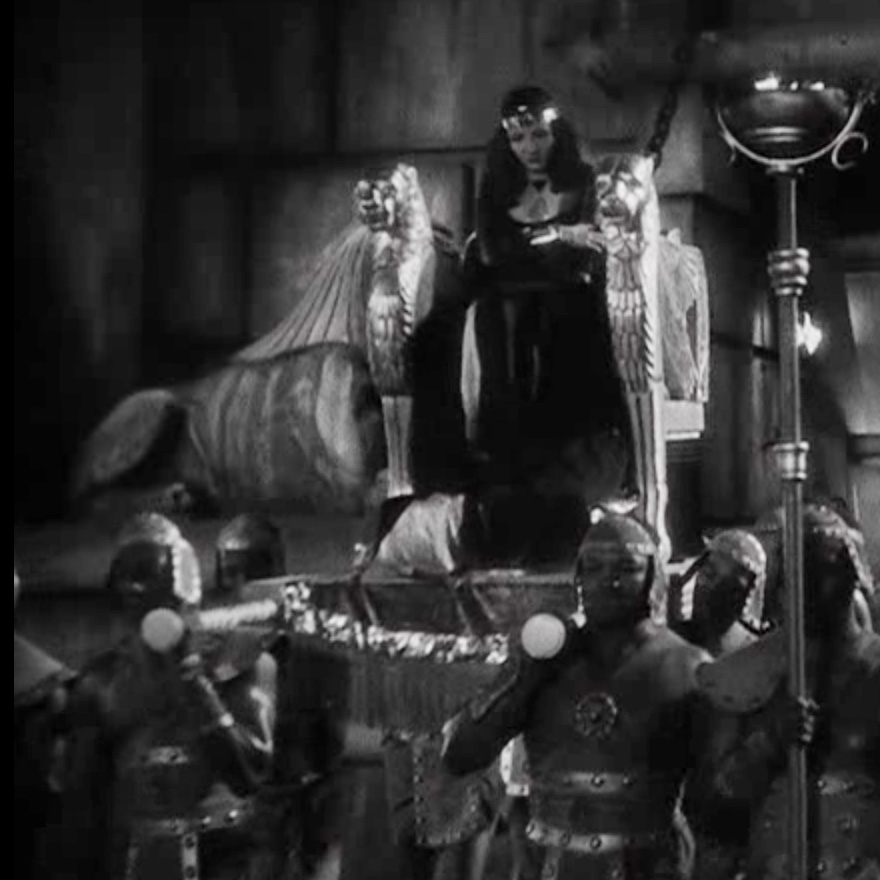
The sedan chair used from that same movie. Credit: Universal
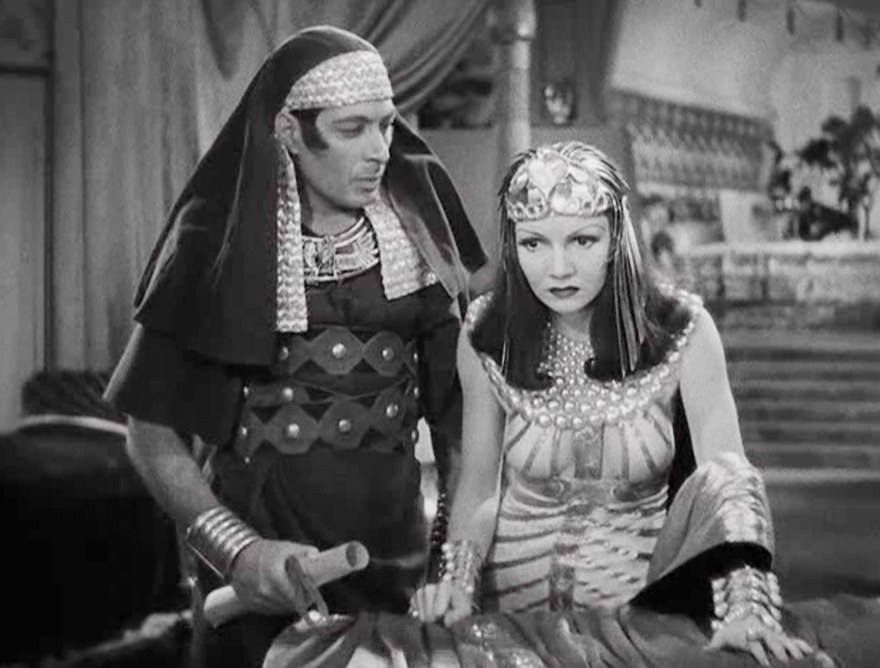
Claudette Colbert wearing an outfit close to the one seen on the figure by King and Country. Credit: Universal
In 2008, a second set including Cleopatra was produced; the AE039 - Cleopatra and Her Handmaidens. This time, the Queen was depicted applying makeup on her face while being helped by her servants.
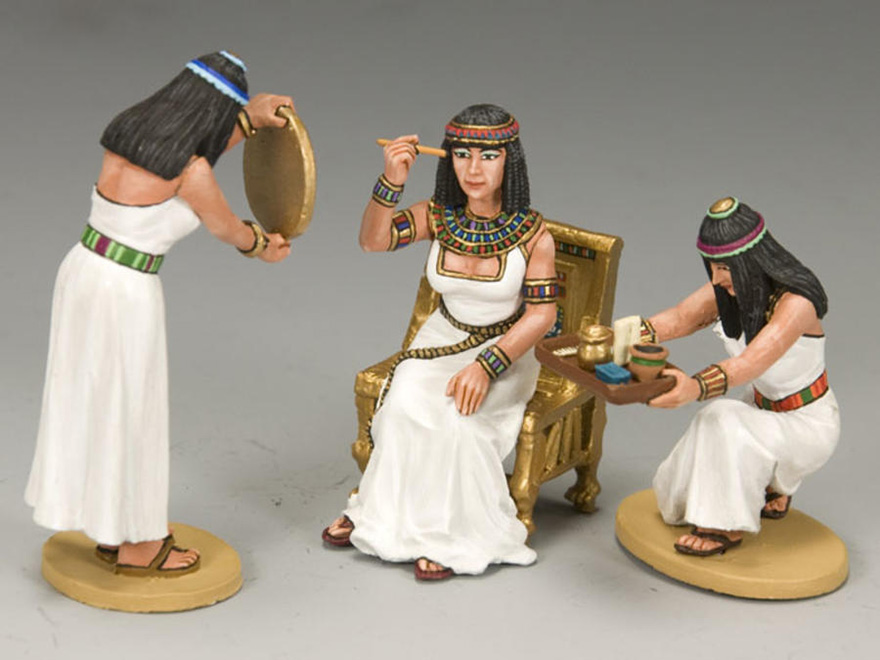
The AE039 in action. Look at those glamorous eyeshadows!
For this version, her outfit was based on Egyptian fashion from that time, but with a greek touch. There is no certainty on what the real Cleopatra wore, but she probably alternated from more or less Egyptian clothes to more or less Greek clothes depending on what was required. As the ruler of Egypt and incarnation of Isis and Hathor, she certainly had the obligation to dress as a true Egyptian goddess for the most formal ceremonies. However, her Greek origins were probably having an influence on her daily life wardrobe as suggested by some clues we have. A statue representing a Ptolemaic Queen (identified by some archeologists as Cleopatra) shows a dress that covers the breasts and that is more Greek than Egyptian in style. However, the statue is very Egyptian in the sculpting esthetic, illustrating the fascinating mix of culture that Ptolemaic Egypt was.

Egyptian statue of a Ptolemaic Queen sculpted in an Egyptian style, but wearing Hellenist fashion. Credit: Metropolitan Museum
The Cleopatra figure in this set was not attached to the chair, making it a very useful piece as she could sit on other objects. Likewise, the chair could be used with different figures or as an element of decor.
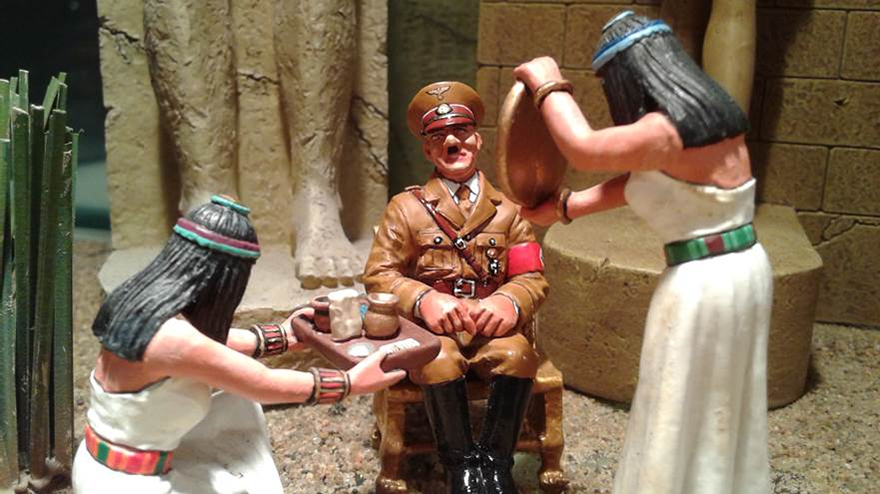
Hitler in Ancient Egypt sitting on Cleopatra's chair. Not every creative idea is a good one…
There is, at the Royal Ontario Museum, a mannequin dressed as an Ancient Egyptian woman whose function is to illustrate the use of makeup in Ancient Egypt. It’s not that the display at the museums is supposed to be Cleopatra or to look like the figure by King and Country, but the ROM display really helps to appreciate all the details given to the various makeup accessories visible on the AE039 set.
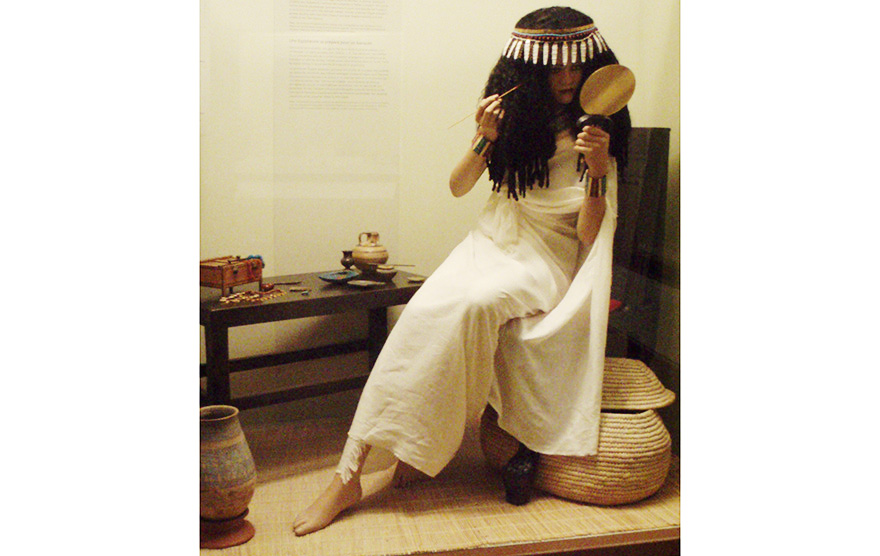
The Ancient Egypt lady and her makeup kit at the ROM. Credit: Keith Schengili-Roberts
The third Cleopatra by King and Country was based on Elizabeth Taylor from the 1963 movie Cleopatra. The figure and the actress both share a similar green dress, makeup and haircut. Obviously, this dress is not historically accurate, but it’s looking good! This figure is still available alone as the AE061 - Cleopatra or in the set AE-S01 - Antony & Cleopatra including Mark Antony (Richard Burton).
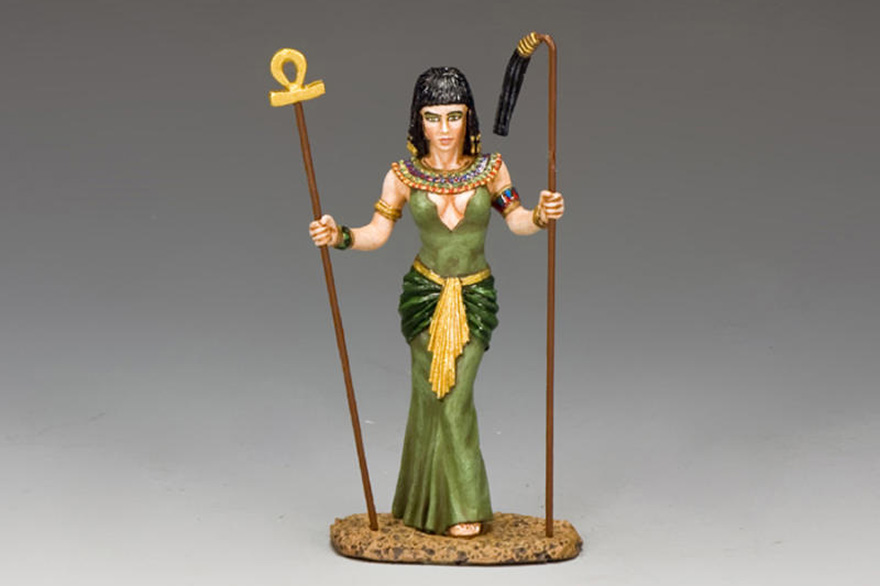
The third Cleopatra by King and Country.
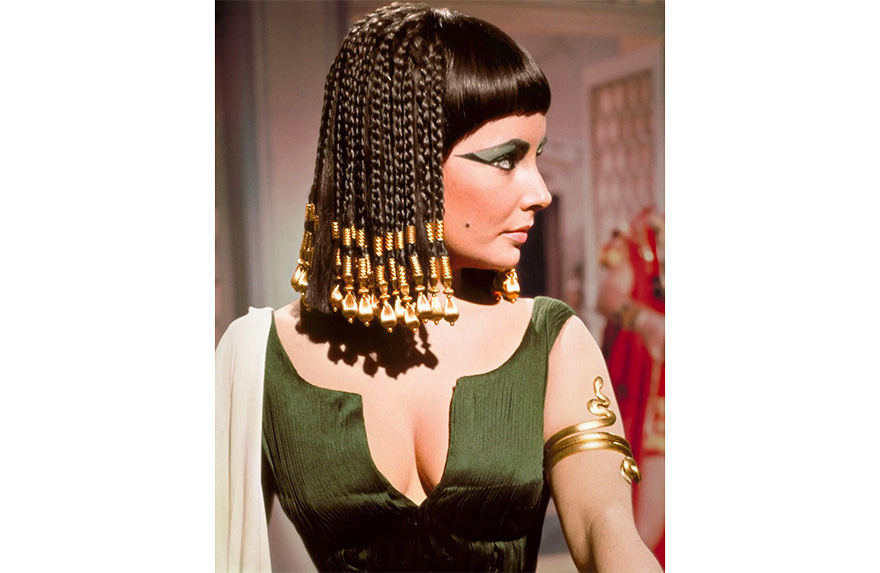
Elizabeth Taylor as Cleopatra. Credit: Twentieth Century Fox
The scepters this third Cleopatra is carrying are very dramatic and give strength to the figure, however they are not accurate. In one hand, she carries something that could be described as a long fly-whisk. Those tools, designed to keep the flying insects away, are often seen on modern depictions of pharaohs but this is actually inaccurate! The idea that leaders of Ancient Egypt were carrying fly-whisks comes from a confusion on how to decipher ancient Egyptian art. On some artifacts, pharaohs are seen holding an object with a shape similar to a fly-whisk. Those are in fact nekhakhas; a ceremonial grain flail showing the connection between the pharaoh and the thriving harvests on his lands. The nekhakha is usually accompanied by a ceremonial crook to illustrate the role of the pharaoh as the leader to his people.
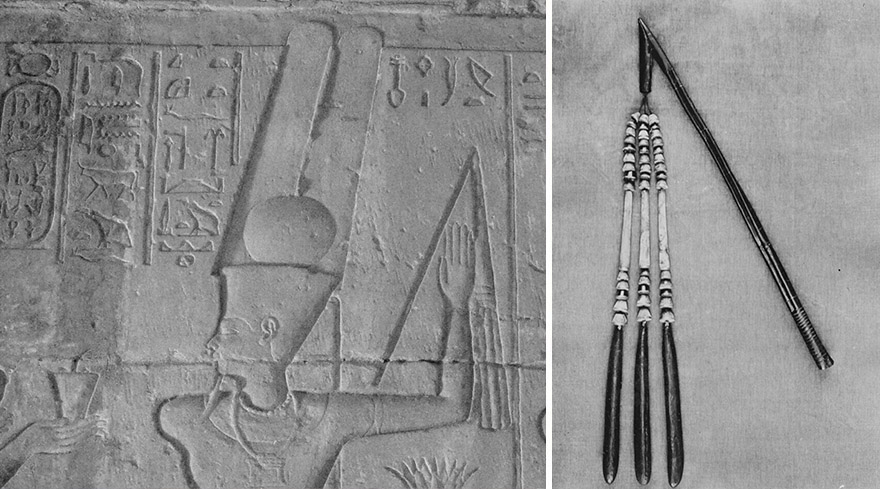
To the left, a ceremonial flail that looks indeed like a fly-whisk. Credit: S F-E-Cameron
To the right, a real nekhakha from the tomb of Senebtisi, now in the MET collection.
In the case of Elizabeth Taylor, the crook was replaced by an ankh, symbol of life. This choice fits well with Cleopatra as it was part of the Isis/Hathor iconography. However, this is still a very long ankh! An alternative for the long fly-whisk could have been the was-scepter; a long staff ending by a fork used to capture snakes and also a part of the Isis/Hathor iconography. Nevertheless, this figure is not aiming to be accurate and gains in fact to be the opposite! This Cleopatra was produced for the movie enthusiasts and those kinds of inaccuracies can be seen as a sweet echo to the Sword-and-sandal movie genre.
At last, it is time to take a look at the new AE101 - Queen Cleopatra’s Sedan Chair Set! This is a very interesting piece not only for the set itself, but also for its context within the history of the Ancient Egypt collection by King and Country.
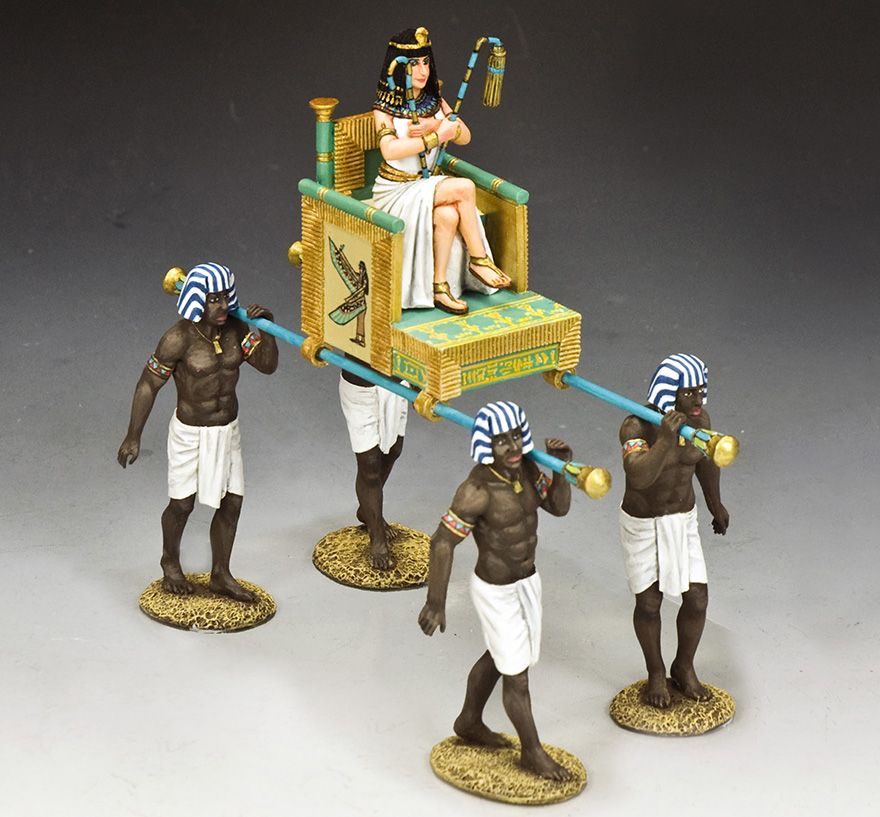
Could it be the best version of Cleopatra so far?
Some might have already noticed this, but this fourth rendition of the great Egyptian Queen is actually resting on a chair that is a re-issue of the chair used on the very first item in this collection: the AE001 - Pharaoh's Sedan Chair! The mold is the same, but the colors are different.
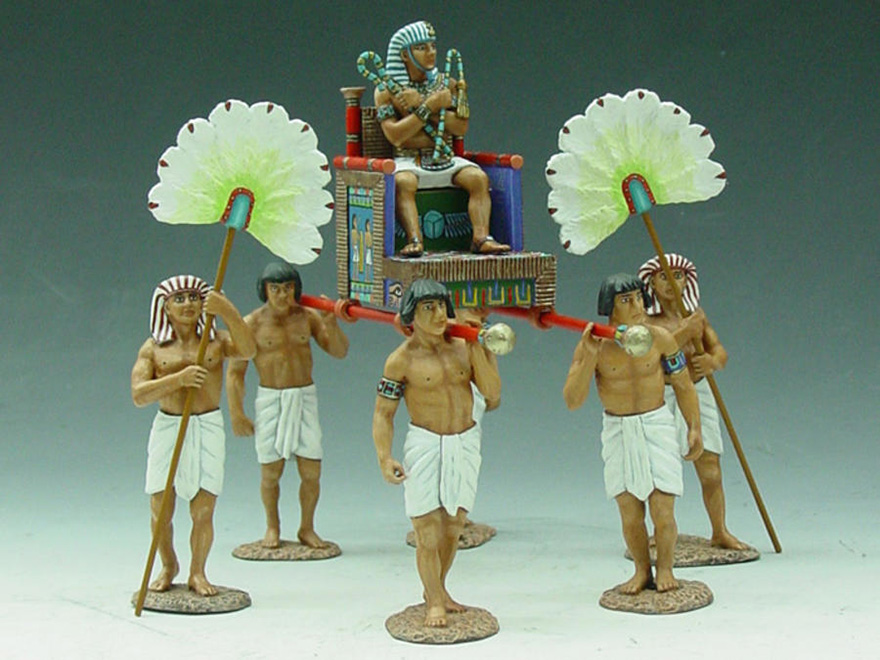
The AE001 - Pharaoh's Sedan Chair released in early 2000’s.
This time, Cleopatra is carrying a fly-whisk disguised as a nekhakha. From a certain distance, this trade off allows the observer to see what he wants to see. The dress worn by Cleopatra is a good hybrid of Egyptian fashion in a more Greek style with a touch of peplum influence visible on the casually shown legs. The presence of snakes on her bracelet and crown are a clever way to foreshadow the events of a death in a more sophisticated way than simply showing a generous cleavage. Which is ironic because uraei were seen as symbols of protection for the royal family!
On that note, it is important to underline that this figure of more realistic body proportions is the first one in this series produced by King and Country to not rely on her bosom to sell the figure. Instead, this more sober approach helps to focus on her body pose and facial expression. The way she stands straight, her piercing eyes and the glimpse of a smirk on her face are giving powerful hints on her personality. We have here, despite her petite appearance, a strong woman with a keen spirit.
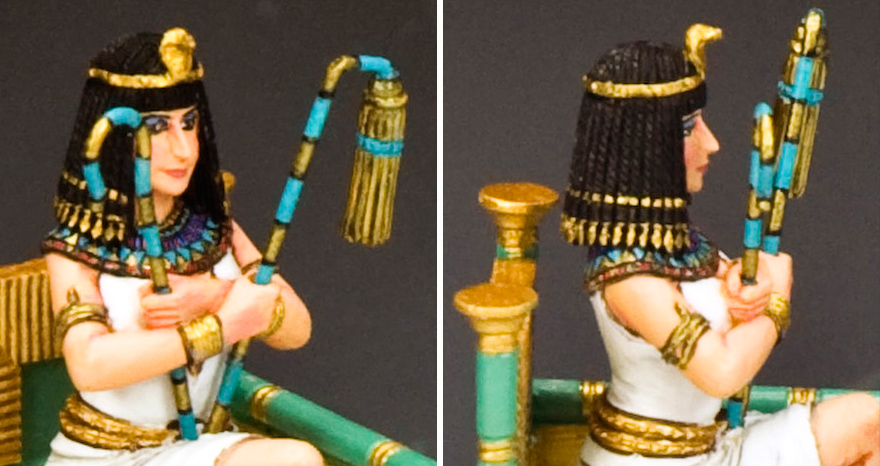
“There’s no denying it, she does have a pretty nose!” - Asterix
According to the official text description, the queen is carried by four nubian slaves. It would have been tempting to reuse the figures of the AE001 to go with the chair, but those are all brand new figures! Those Nubian carriers are really ripped compared to their old Egyptian counterparts, giving to the set a touch of orientalist painting. This creates also an interesting contrast with Cleopatra who suddenly looks much more delicate because of the close proximity of those four strong men. Those four nubians are also those used on the AE099 - The Pharaoh’s New Sedan Chair Set. Same thing goes for the sedan chair itself. This is something to consider for the collectors looking to purchase both sets as those repetitions might be noticed.
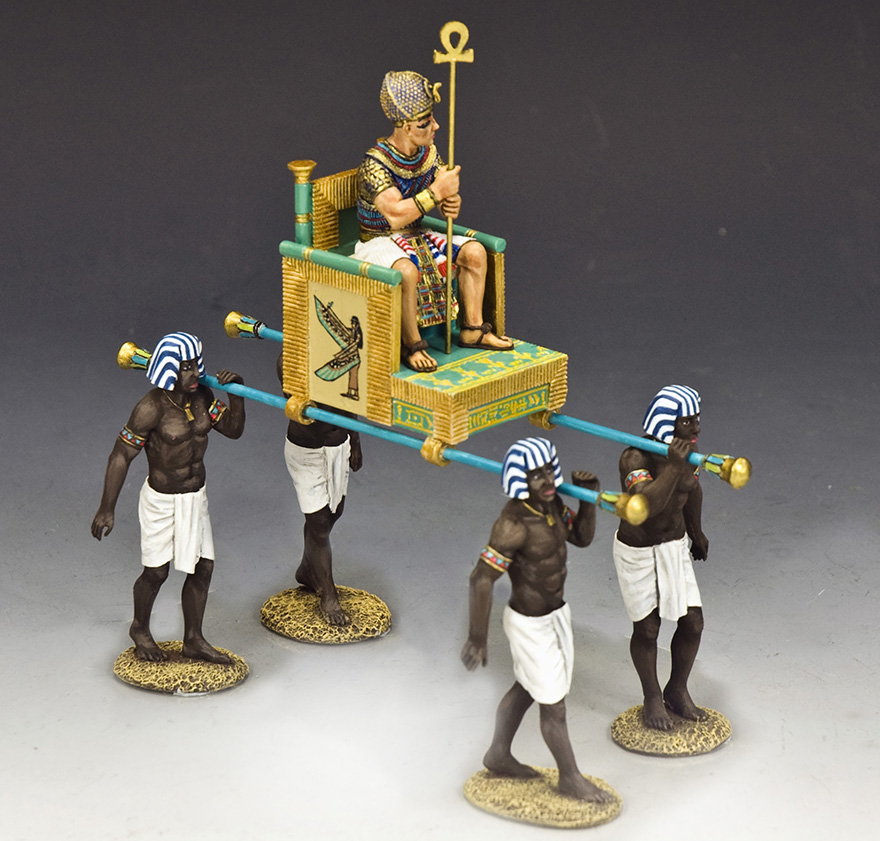
You’ll get a bonus point if you can tell where his long ankh scepter is coming from.
This new version of the sedan chair is decorated on both side with representations of Isis carrying an ankh. This fits nicely with Cleopatra and her religious function. The carrying chairs are always impressive when seen in movies and, for once, those are no Hollywood inventions! They indeed existed and some were found on archeological sites while others are still visible on Egyptian art. A model very similar to the one produced by King and Country can be found at Ipi’s tomb at Saqqara. However, those were less epic than what was seen in some Hollywood movies...
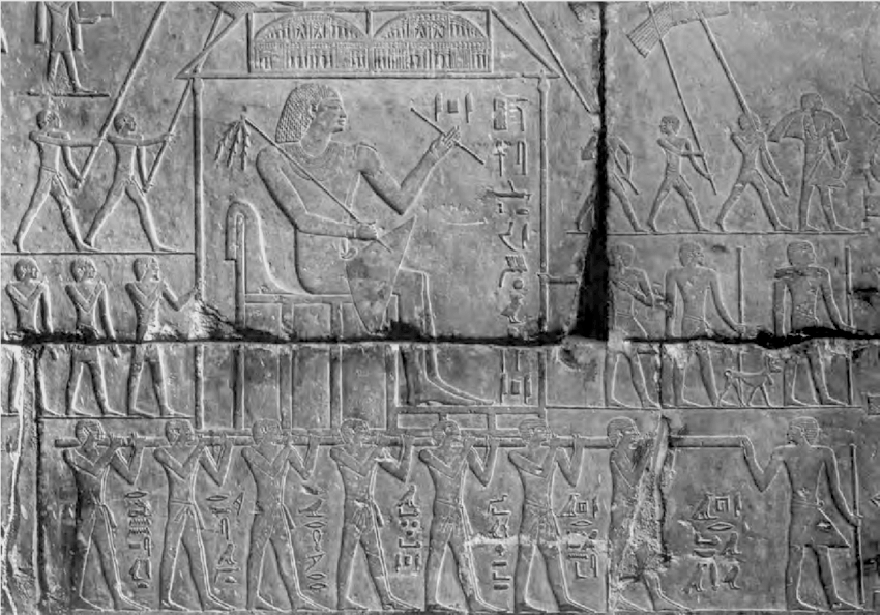
The carrying chair of Ipi as shown in his mastaba tomb at Saqqara. Credit: Saleh & Sourouzia
To conclude, this new rendition of Cleopatra has a perfect mix of historical references and interpretations. This approach is probably for the best as there is no totally trusty depiction of Cleopatra. Clues are available, but not enough to be sure of many details. So, having a Cleopatra that is recognizable as herself implies at somee point to rely on what most of the people expect Cleopatra to look like. This set is also a good example of a clever reuse. Seeing the carrying chair from the AE001 coming back might actually have shaved off a bit of production cost and could even be considered as a sweet tribute to the beginning of the Ancient Egypt collection. I also suspect that one of the goals when producing that figure was to have a version of Cleopatra who would be attractive for her personality and cunning skills instead of relying on her physical attributes. Seeing that one historical figure, who is now at her fourth rendition, still can be presented in a new and interesting way makes me wish for new versions of previously covered famous persons!

 Français
Français